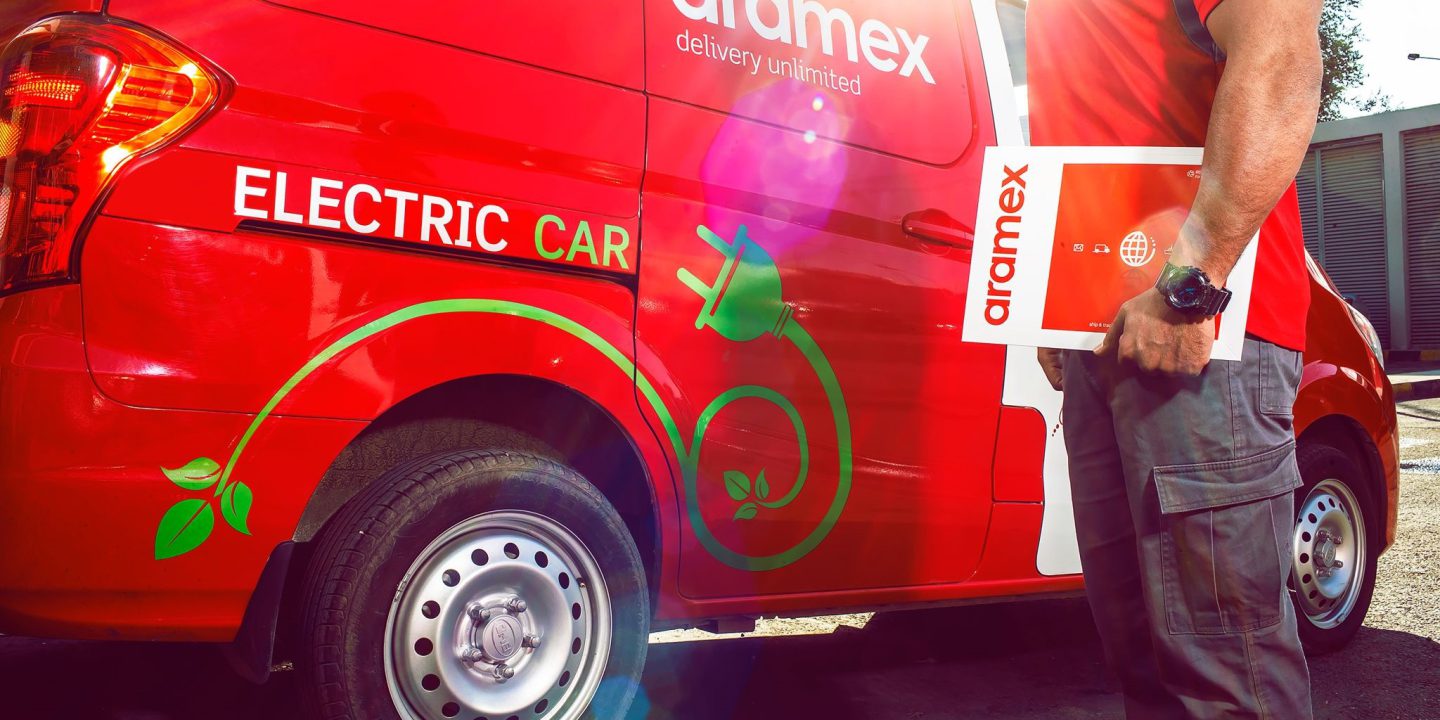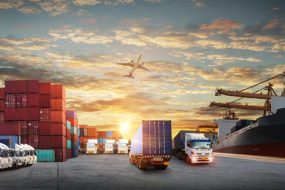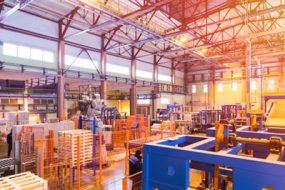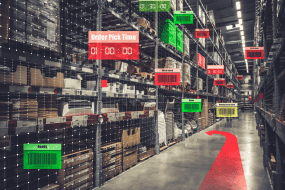

The logistics and transportation sectors are transforming significantly in an era of increased environmental consciousness. Sustainable transportation has emerged as a focal point for innovation, aiming to reduce ecological impact while enhancing economic and operational efficiency. This article delves into the complexities and solutions surrounding green logistics, eco-friendly transport, and sustainable transportation, offering critical insights for supply chain managers, e-commerce business owners, and business managers striving to navigate this evolving landscape.
Carbon footprints in transportation vary based on logistics, fuel, shipping routes, distance travelled, and vehicle energy efficiency. These emissions are commonly measured in units of carbon dioxide equivalent (CO2e), capturing the combined impact of greenhouse gases on global warming. This measurement aggregates emissions from multiple transportation sources, including cars, trains, and aeroplanes, which contribute to air pollution, climate change, heavy metal contamination in plants, urban congestion, and the depletion of natural resources.
Road transport is notably the highest contributor of CO2e in the transport sector, accounting for 74% of global transportation CO2 emissions. Reducing this footprint is critical in transitioning toward more sustainable and environmentally friendly logistics, shipping, and transportation systems.
The Imperative for Sustainable Transportation
The transportation sector significantly contributes to global greenhouse gas emissions, underscoring the pressing need for a transition to more sustainable modes of transportation. Beyond environmental benefits, this shift is crucial for improving economic efficiency and resilience within the supply chain, as sustainable practices can lead to cost savings and improved resource management. Companies that lead in sustainability can drive significant change across industries and positively influence business practices, standards and behaviours.
Innovations Driving Sustainable Transportation
Eco-friendly transport solutions
Eco-friendly transport solutions encompass many initiatives to reduce transportation emissions. For instance, electric vehicles (EVs) are at the forefront of this transformation. These vehicles use electricity rather than fossil fuels, and with advancements in battery technology and increased infrastructure for EV charging, electric cars are becoming a viable option for both short—and long-haul transportation. The widespread adoption of EVs not only reduces emissions but also cuts down on noise pollution, making them ideal for urban environments.
Multimodal Transportation
Multimodal transportation, which involves using multiple modes of transport to move goods from origin to destination, is another critical component of sustainable transportation. By combining rail, road, and sea transport, companies can optimise logistics, reduce costs, and minimise environmental impact. This approach is efficient in urban areas, where congestion and pollution are significant challenges. Utilising rail and sea transport can significantly reduce the carbon footprint compared to road transport, making it a preferred choice for long-distance shipping.
Related article: Reduce Emissions, Gain Profits: The Logistics Energy Transition
Alternative Fuel Options
Ongoing developments in hydrogen fuel cells and biofuels present additional avenues for reducing emissions. These alternative fuels offer the potential to power heavy-duty vehicles and aircraft, sectors that have traditionally been challenging to decarbonise. Biofuel has demonstrated its environmental benefits compared to petroleum and other fossil fuels, significantly reducing greenhouse gas emissions. As it gains widespread adoption as an alternative energy source, biofuel has the potential to replace fossil fuels in the future. Hydrogen fuel cells have also proven to be an efficient method of generating electricity, offering a promising step toward decarbonisation and a more sustainable energy system. Using a chemical reaction between hydrogen and oxygen, they produce only heat and water as byproducts—both of which are environmentally safe.
Switch to a logistics service provider that prioritises sustainability. Get in touch with Aramex today!
Challenges and Opportunities in Sustainable Transportation
Navigating the Complexities of Urbanisation
Urbanisation presents both challenges and opportunities for sustainable transportation. As cities expand, the demand for efficient and eco-friendly logistics solutions increases. Urban areas require innovative approaches to manage congestion, reduce emissions, and ensure timely delivery of goods. Solutions such as urban consolidation centres, which streamline the distribution of goods in city centres and use electric delivery vehicles, are gaining traction. These solutions address environmental concerns and improve service levels by reducing delivery times and enhancing customer satisfaction.
Urban environments also offer opportunities for innovation in last-mile delivery, a critical component of logistics that often contributes significantly to emissions and congestion. Drones and autonomous delivery vehicles are being explored as potential solutions to these challenges, offering faster and more efficient delivery options that can operate in congested urban settings without contributing to traffic or pollution.
Overcoming Barriers to Adoption
Despite the clear benefits, adopting sustainable transportation solutions is not without obstacles. High initial costs, infrastructure limitations, and regulatory hurdles can impede progress. However, businesses that invest in sustainable practices often see long-term benefits, including reduced operational costs and compliance with regulatory requirements. Overcoming these barriers requires strategic planning, investment, and collaboration to develop supportive policies and incentives.
For example, financial incentives such as tax breaks can help offset the initial costs of adopting green technologies. Additionally, partnerships with technology providers and other businesses can facilitate access to cutting-edge solutions and expertise. As the market for sustainable transportation grows, economies of scale will likely reduce costs, making these solutions more accessible to businesses.
Related article: 5 Ways Autonomous Trucks are Taking Over Logistics
The Future of Sustainable Transportation
As the global focus on sustainability intensifies, businesses that proactively engage in sustainable practices will be well-positioned to thrive. Integrating sustainability into core business strategies will address environmental challenges and unlock new market opportunities, driving growth and innovation in the logistics and transportation sectors. Governments, businesses, and technology providers must work together to develop and implement policies and technologies that promote sustainability. Investment in research and development and incentives for adopting green technologies will drive this transition. Public-private partnerships can be crucial in accelerating the deployment of infrastructure needed to support sustainable transportation.
Practical Steps Towards Implementation
- Evaluate Current Practices: Evaluate current logistics practices to identify areas for improvement. This involves analysing energy consumption, emissions, and waste generation to establish a baseline and set measurable goals for sustainability.
- Invest in Technology: Implement technologies that generate data-driven insights, such as AI for predictive analytics and IoT for real-time monitoring. These technologies’ insights can significantly improve operational efficiency and environmental performance.
- Collaborate with Partners: Work with suppliers, customers, and technology providers to develop and implement sustainable solutions. Building a network of partners committed to sustainability can facilitate sharing best practices and drive collective progress towards common goals.
- Monitor and Adapt: Monitor performance and adapt strategies to align with changing environmental and market conditions. Regularly reviewing and updating sustainability initiatives ensures they remain practical and relevant in a dynamic business environment.
Strategic Insights for Supply Chain Managers and Business Leaders
Understanding and leveraging the trends in sustainable transportation is essential for supply chain managers and business leaders. Companies can enhance their competitiveness and resilience in a rapidly changing environment by adopting innovative business models and technologies. This involves rethinking traditional logistics strategies and embracing new dynamics, such as the circular economy, which minimises waste and maximises resource efficiency.
Embracing these concepts can lead to developing more sustainable products and services that appeal to environmentally conscious consumers and open up new revenue streams. Incorporating sustainability into supply chain management also requires a shift in organisational culture and mindset. Leaders must prioritise sustainability in decision-making processes and foster a culture of continuous improvement and innovation. This cultural shift is essential for aligning the organisation with sustainability goals and ensuring long-term success.
Sustainable transportation is not merely a trend but a necessity for businesses aiming to thrive in a world increasingly focused on environmental responsibility. Companies can position themselves at the forefront of this critical transformation by embracing green logistics, eco-friendly transport solutions, and leveraging technological innovations. The path to sustainability is complex, but with strategic foresight and collaboration, it offers unparalleled opportunities for growth and success in the logistics and transportation sectors. As businesses innovate and adapt, sustainable transportation will become a cornerstone of resilient and prosperous supply chains worldwide.




